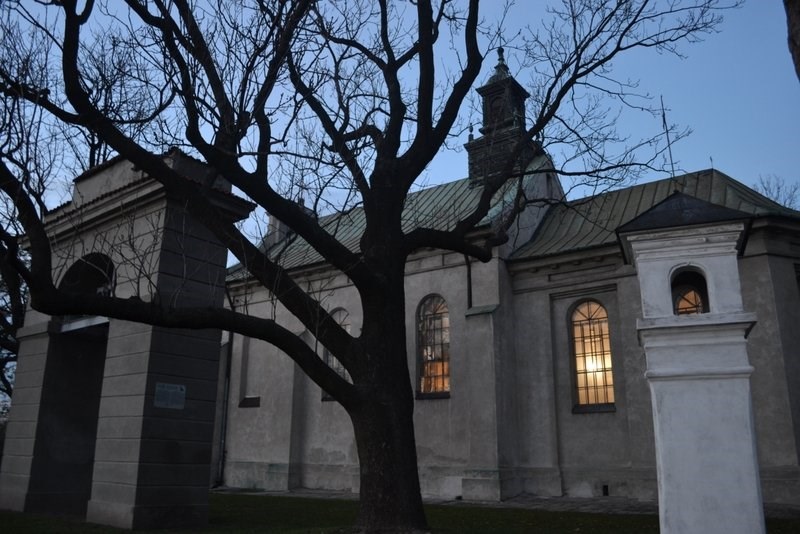Legend has it that the first temple here was founded by Mieszko I in 986. The present church was built in the first half of the 16th c. on an escarpment towering over the Czechówka river valley. Owing to the rector of the parish, priest W. Turobojski, it was rebuilt in the Lublin Renaissance style in the first half of the 17th c.
The nave and chancel were roofed with a barrel vault decorated with stuccos, which was built by the Lublin mason Piotr Traversi. The Classicist façade, church turret, church-porch and the bell tower were added at the end of the 19th c.
At the Baroque high altar dating from the second half of the 18th c. stands a late-Renaissance statue of St. Nicholas – the patron saint of the church. The Rococo side altar was made for the Dominican church in Lublin in the mid-18th c. in Sebastian Zeisel’s workshop in Puławy, but it was moved to St. Nicholas’ Church at the turn of the 20th c. The oldest element of the interior is a 17th-century wooden rood on a beam spanned under the chancel arch. The pulpit and the font were made at the beginning of the 20th c. in Wilhelm Hess’s Lublin scales factory.




